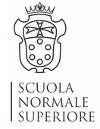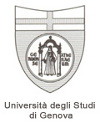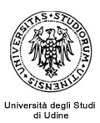Spreading visual culture: contemporary art through periodicals, archives and illustrations.
«Lo Spirito Folletto», which significantly recalls the previous one published in 1848 in Milan by Redaelli, allows the Project to cover a broad time span (1861-1885), full of events for the Italian history, symbolizing at best also the industrialization of the satirical press. With «Lo Spirito Folletto», the humoristic periodical becomes indeed an expensive item, with really painstaking images, which are often genre-paintings (“lithographs”), sold in special collections. Arriving thus at the end of the nineteenth century, a general consideration of the relationship between “high” and “low” visual culture cannot be separated from the study of the Liberty art, one of the last “global” and “multidirectional” movements, capable to characterize all the aspects of the modern society, from the interiors to the style of many illustrators and artists. In this sense, it is absolutely necessary a careful rereading of fundamental periodicals such as «L'Eroica» (founded in 1911 in La Spezia by Ettore Cozzani), «Ebe» (founded in Chiavari in 1905 and directed by Louis Romulo Sanguineti, alias Luigi Amaro ), «Riviera Ligure»: privileged places not only for the high quality of the literary debate hosted on their pages (from Giovanni Pascoli, Luigi Pirandello, Umberto Saba, followed by Dino Campana, Clemente Rebora, Giovanni Boine, Camillo Sbarbaro, up to Piero Jahier, Giuseppe Ungaretti and many others) but also for the high artistic profile (among others, Franz Laskoff, Kienerk George, Edward De Albertis, Plinio Nomellini, Adolfo Magrini). In particular, «Riviera Ligure», which, emblematically, was founded in 1895 as the commercial bulletin of the Sasso Olive Oil Company of Oneglia (now Imperia), soon became, thanks to Mario Novaro (its owner and director but most of all intellectual, poet, philosopher and industrial entrepreneur), an incredibly advanced and privileged meeting point of both the Italian poetry of the first 20th century and the updated Liberty graphics, without losing its “business” and promotional vocation. A fundamental aspect, concerning the relationship between text and image, is the fact that Mario Novaro came quickly to release the picture from the text, without necessarily asking the artist to become an illustrator of other people's ideas, recognizing the same dignity to the graphic and literary work (even in terms of payments). The strength of the analysis in this case is the possibility to collaborate with Mario Novaro Foundation and Archive, where are preserved valuable epistolary materials, thus allowing the researchers to reconstruct in its entirety the complex history of the magazine.
Following page...
Taking «Riviera Ligure» as an indispensable comparative basis, the archive of drawings of the publisher Bemporad/Giunti and the Milanese periodical «Il Risorgimento Grafico» (1902-1941), (both studied by the Scuola Normale Superiore Unit) will be precious points of observation for a continuous interchange between “major” and “minor” arts, nonetheless continuing the critical-historical debate started with the Ligure periodical. «Il Risorgimento Grafico» and the Bemporad archive represent an important opportunity to analyze the evolution of the graphics in the first period of the 20th century, exploring on one side its technical possibilities and, on the other, its self-expression possibilities. Furthermore, by placing side by side a periodical among the most respected at the time, and the activities of a publisher as fundamental as Bemporad was, the Project allows the user to follow “in real time” the figurative debate figurative, like the one concerning the edition of “Pinocchio” in 1901, illustrated by Carlo Chiostri, central for the importance of the publication. The Project thus enters the sphere of the mass culture, passing from the rarefied atmosphere of «Riviera Ligure» to the more practical one of the book trade. The Milanese magazine directed by Bertieri also features the first news of the emerging mass society, such as wall posters, of which Cesare Ratta, in n. 1-2 of 1905, analyzes sharply the figurative and social mechanism. Observing the rise of chromolithography, the critic notes that the posters have changed the cityscape, flooded with the advertisements of various companies, and transformed the streets “in [...] the museum of the poor”. The periodical, however, is not limited to housing theoretical articles, but also offers to the reader some visual examples of publishing and figurative innovations: from postcards to bookplates, from the competitions for the covers to those for the stamps, on the pages of the periodicals appear some of the greatest artists of the time. Many of these illustrators are also present in the archive of the publisher Bemporad, allowing the matching of the figurative controversies with the real works, in a highly significant monitoring of iconographic models.
|Objectives | Il Progetto (1, 2 ,3 , 4 , 5 , 6) | Hide |















